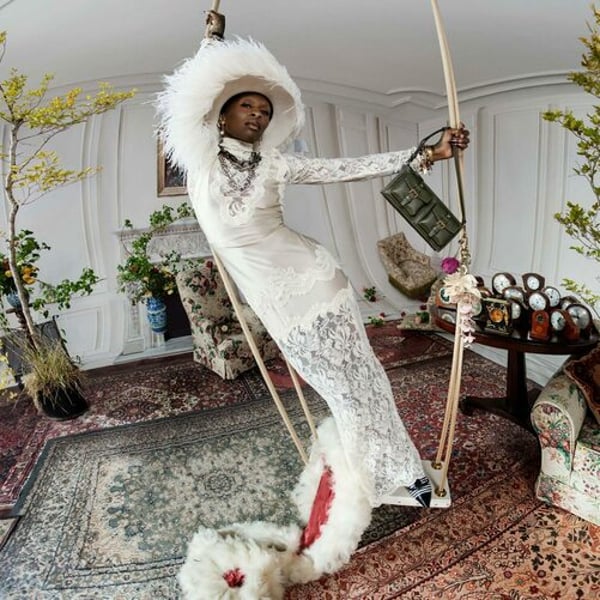Translated by
Nazia BIBI KEENOO
Published
September 24, 2025
Tijosa Eco-House Camp, located in Ovar on a site that once held farmland and ruins, presents itself as a haven where “exclusivity and privacy, coupled with exemplary service, are our priority,” the brand states. The signature interiors of its rooms and suites were created by a curated mix of fine artists, ceramicists, and renowned fashion designers: Alexandra Moura, Dino Alves, Katty Xiomara, Nuno Gama, and Storytailors, founded by João Branco and Luís Sanchez. Rooms start from €150 per night and suites from €185. All accommodations offer views of the Ria.

“From the rooms and suites with Hästens beds—recognized as the best in the world—featuring signature décor created exclusively by fashion designers Alexandra Moura, Katty Xiomara, Dino Alves, Storytailors and Nuno Gama, to the common areas showcasing works by artist Manuela Pimentel, ceramicists Anna Westerlund, Helena Brízido and Sofia Albuquerque, and even a recycled-plastic tapestry by Maria Descalça, Tijosa Eco-House Camp becomes a permanent art gallery.”
The Alexandra Moura Suite and its corresponding room feature a pared-back vintage style, with painted plank walls that evoke the charm of old beach and countryside homes, a patinated Queen Anne-style bedside table and chest of drawers, and a modernist armchair. Also noteworthy are the watercolor drawings by António Soares. On the balcony, wicker furniture enhances the rustic feel.
“My rooms are intended to be practically identical, with a simplicity in which one or two details will make the difference,” Moura explains on the Tijosa Eco-House Camp website.

“The watercolors by the artist António Soares are works of art that illustrate the vision behind the rooms. They convey great serenity, elegance and good taste, bringing peace and harmony to the eye and to the day-to-day life of those who stay in my rooms.”
“The woods used in the rooms and furniture are valued for their nobility,” she continues. “My rooms are adaptable to any space, whether they are here, in a Nordic country, in Japan or in a Le Corbusier house, where minimalism reigns, with attention to thoughtful yet subtle details.”
“These are my rooms, identical at their core, in their essence, with just a touch to set them apart.”

The Dino Alves Suite, also overlooking the Ria, is designed with a simple, relaxed atmosphere where wood and black-and-white elements dominate. Tyres are repurposed as bedside tables, giving the space an intimate and subversive identity.
“The first inspiration for my rooms was the Tijosa Eco-House Camp project itself and its ecological purposes,” he explains on the website. Hence, the repurposing of materials, waste that would otherwise be discarded, and the subversive reuse of objects from realms unrelated to the space in which they were applied, such as bedside tables made from used car tyres. Then there’s the DNA of my work and the importance of clients sensing a signature of authorship when they enter the rooms.”
“As there are two bedrooms, I decided to create one white and one black, in an allusion to Yin and Yang, also represented in the project’s swimming pool,” he adds. “The black room, more sophisticated due to the color itself, works almost like a black box.”
“Totally black, apart from a few details in highly graphic colors, this room has a slightly punk feel, which is also evident in my work. This more aggressive look is conveyed, for example, by the curtain made from military netting used for camouflage, and by the black tyres used as bedside tables.”

Alves adds: “These slightly rough, ‘trash’ elements are balanced with details in bold colors and gilt woodcarving placed in strategic spots, making this room an altogether different experience.”
“It’s an Eco-House Camp in Ovar, in an unspoiled area with two branches of the Ria de Aveiro, where flamingos and birdlife are plentiful,” he told FashionNetwork.com. “It’s the last building at Cais da Tijosa and had to follow certain rules, such as the choice of wood. There are ten rooms and suites, and a different fashion designer decorated each pair. My décor was conceived with sustainability in mind, using materials and objects altered and elevated through the discipline of upcycling.”
“One bedroom is totally white and the other totally black. The white is inspired by the modest homes of our grandmothers, with curtains made from classic white men’s shirts and a bedspread fashioned from leftover fabrics. There’s always a concern for sustainability,” he says. “The black room is more sophisticated, with strong accents of color. The curtains are made from laser-cut military canvases, and the light switches, also in bold colors, stand out in the blackness.”

The Katty Xiomara Suite features a narrative driven by regional ceramic tile heritage.
“Following the traditional tile narrative so characteristic of this region, we brought the concept from outside to inside, exploring it with materials typical of our homes, such as wood, fabrics and tapestry,” she explains.
“We created small square structures with different heights and angles, reimagining the flat effect of tile as something more three-dimensional and contemporary. These structures have small grooves that allowed us to interweave tapestry strips, obtained from the manufacture of the carpets that dress the floor, as well as to make use of other textile elements.”

Regarding the tile concept, Katty Xiomara, a Venezuelan-born designer based in Porto, notes that “we used white as a backdrop and blue as the color that illustrates and fills, harmonized with warm and neutral tones. The remaining decorative elements are pared back and simple, focusing essentially on comfort and allowing the central element that adorns the walls to breathe.”
For its part, the Nuno Gama Suite boasts an intimate, minimalist atmosphere, characterized by a palette of black, wood, and metal. The space integrates architectural elements with curated designer pieces, including sculptural lamps and a Mies van der Rohe chaise longue set atop a leather rug. Gama’s signature is woven into the room itself, with his logo embroidered on both the cushions and the mattress.

“The eternal Yin and Yang in Tijosa’s search for peace and comfort,” the website notes, referencing the couturier’s collections that reinterpret Portuguese regional identity and craftsmanship, most recently those inspired by the Alentejo.
Though not his first interior project, Gama does not intend to expand into lifestyle design. “It wasn’t the first time, but that’s not my métier. I did it with the friendship and affection that bind us, and basically, it was about creating a space that was pleasant and harmonious, and where I would enjoy staying. That was the challenge,” he told FashionNetwork.com.

The final space was curated by Storytailors, the label founded in 2001 by João Branco and Luís Sanchez. Their concept tells the story of an Eastern-inspired dress, presented in a clean setting that enhances the sculptural textures of artisanal textiles.
“Narké, the story of a dress. It portrays our version of the Cinderella story, born in the East, China, crossing continents and eras until it reaches the West, the court of the Sun King in the 18th century,” the duo explains.
“The illustrations in the rooms are interpretations of Narké, our Cinderella, over the centuries.”

The road to Cais da Tijosa, where the eco-retreat is situated, winds through villages and farmland, with the Ria’s landscape flanking both sides of the road. Local wildlife includes ospreys, black-winged kites, little owls, and small mammals.
According to Booking.com, Tijosa Eco-House Camp “is not just a boutique hotel — it’s a living art space. Every corner is filled with exclusive pieces of art and furniture by renowned designers, and each room is an individual project created by Portuguese designers,” as shared by the brand on Instagram at @tijosa_eco_house.

This article is an automatic translation.
Click here to read the original article.
Copyright © 2025 FashionNetwork.com All rights reserved.







